Record Shops
The Seaside Recording Booth
Voice
recording
booths
were
popular
in
the
UK
between
1930s
and
the
early
1970s.
Southend
was
also
home
to
such
invention,
for
a
small
fee,
visitors
to
Southend
could
record
a
memento
of
their
stay
in
the
town,
whether
it
was
a
spoken
message
or
a
song
sung
to
a
loved
one
or
family
member,
the
event
could
be
recorded
on
a
disc
and
played
later on a record player, these could be described as audio postcards from a bygone age.

Southend-on-Sea
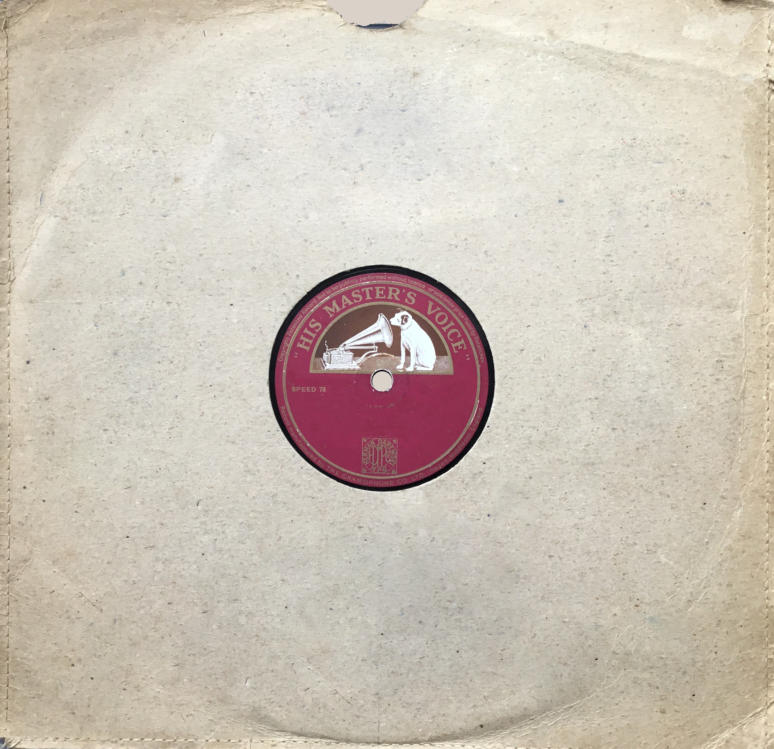
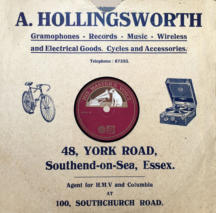
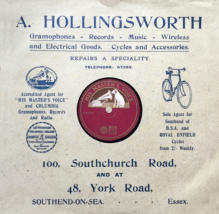
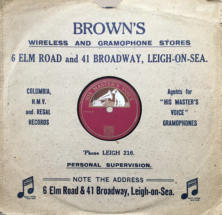
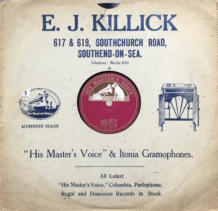

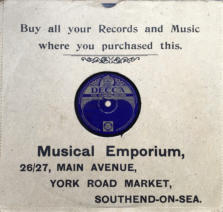



Southend Timeline Southend-on-Sea © 2009 - 2024. All Rights Reserved



SOUTHEND CITY

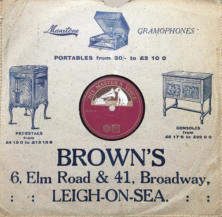

78 Record
Named
after
the
speed
it
rotated
at,
this
disc
was
manufactured
between
1898
and
the
late
1950s,
although
some
children’s
records
were
released
made
from
vinyl
at
the
78rpm
speed
up
until
the
early
1970s.
Common
material
was
shellac
which
was
quite
brittle.
The
12
inch
disc
could
last
up
to
four
or
five
minutes, whilst the 10 inch only lasted 3 minutes. The 78 suffered with a limited dynamic range.
LP Record or long playing/long play
In
June
1948
the
LP
was
introduced
by
Columbia
Laboratories,
and
soon
became
a
standard
format
for
the
record
industry.
The
common
speed
was
set
at
33
1/3rpm
although
some
early
discs
for
speech
rotated
at
16rpm.
Made
from
vinyl
this
disc
came
in
10
inch
and
the
popular
12
inch
sizes.
This
used
“microgroove”
technology,
and
23
minutes
per
side
could
be
achieved
with
a
good
dynamic
range,
longer
with
a
lower
signal
level.
Early
pressings
were
in
mono,
later,
stereo
and
quadraphonic
disc
were
introduced
also
coloured
vinyl
and
picture
discs
were
produced
in
the
1980s.
This
format
is
still
manufactured
today
although
its
popularity
has
greatly
decreased
since
the
introduction
of
digital
formats.
12 Inch Single
Born
out
of
the
1970s
disco
era,
the
12
inch
single
had
wider
grooves
and
larger
separation
between
them
giving
better
dynamic
range
and
a
higher
signal
level.
Songs
on
this
format
unlike
the
7
inch
single
could
be
lengthened
offering
extended
versions,
remixes
and
instrumentals.
Most
rotated
at
45rpm
with
some
pressings running at 33 1/3rpm. These are still popular today especially with DJ’s.
7 Inch Single
The
7
inch
single
or
also
known
as
the
45,
the
latter
taken
from
the
rotation
speed
of
the
disc
at
45rpm,
was
released
by
RCA
Victor
on
31st
March
1949.
This
format
was
a
direct
replacement
for
the
shellac
78
records,
these
were
made
from
vinyl,
smaller,
more
durable
and
offered
better
sound
quality.
The
first
releases
were
recorded
in
mono
but
by
the
early
1970s
almost
all
the
45s
sold
were
in
stereo.
Colombia
Laboratories
who
had
released
the
vinyl
LP
in
1948
also
released
a
7
inch
33
1/3rpm
disc
in
March
1949
but
the
RCA
45
soon
took
over
and
became
the
more
popular
format
which
we
know
today.
In
the
1950s
these
lightweight
and
inexpensive
discs
quickly
became
popular
and
would
stay
popular
till
the
1980s,
these
sometimes
were
marketed
with
picture
covers,
later
some
versions
were
available
as
picture
discs
or
coloured vinyl.
Reel to Reel Tape
The
reel
to
reel
tape
recorder
was
invented
by
the
German
-
British
Blattnerphone
and
the
Magnetophone
in
the
1930s,
by
the
1950s
the
reel
to
reel
tape
recorder
was
becoming
popular,
with
the
first
stereo
pre
recorded
tapes
on
the
market,
not
only
would
this
format
play
purchased
recorded
tapes
but
allowed
you
to
make
your
own
recordings.
Early
machines
were
mono,
some
with
one
track
per
side
others
with
two
tracks
per
side,
later
when
stereo
machines
were
introduced
the
two
track
system
used
one
track
for
left
hand
channel
with
the
other
used
for
the
right
hand
channel
per
side.
The
tape
itself
was
¼
of
an
inch
wide
Some
machines
had
switchable
speeds
most
common
speeds
were
3
¾,
7
½,
and
15
inches
per
second the tape spools came in different sizes.
By
the
1970s
popularity
for
the
reel
to
reel
was
wavering
to
the
more
convenient
compact
cassette,
and
in
the 1980s most of the manufacturers had discontinued their range of machines.
In
the
2010s
there
was
an
analogue
revival
and
once
again
old
machines
became
prized
component
of
serious audiophiles.
8 Track Cartridge/Stereo 8 (8 Track)
This
format
was
popular
from
the
mid
1960s
to
the
early
1980s,
originally
taken
from
another
design
called
Stereo-Pak
designed
by
Earl
Muntz
in
the
1940s.
Development
of
the
cartridge
was
first
designed
by
Bernard
Cousino
in
1952.
The
cartridge
contained
a
single
reel
with
a
continuous
loop
of
magnetic
tape.
The
format
first
started
out
as
a
four
track
system
but
later
advancement
in
technology
8
tracks
and
12
track
players
became
available,
with
Quadraphonic
sound
on
8
track
announced
in
the
early
1970s.
By
the end of the 1970s the 8 track cartridge had lost its popularity.
Compact Cassette
The
Cassette
Tape
was
introduced
in
September
1963,
with
pre
recorded
cassettes
being
launched
in
Europe
in
late
1965.
Developed
by
the
Dutch
company
Royal
Philips
in
Belgium
by
a
team
of
engineers
led
by
Lou
Ottens.
The
audio
cassette
came
in
two
forms,
either
“blank”
ready
for
recording
or
containing
content
pre
recorded.
Common
standard
capacities
for
“blank”
cassettes
were
c60,
30
minutes
each
side,
c90,
45
minutes
each
side,
c120,
60
minutes
each
side.
Musicassettes
(pre
recorded)
tape
lengths
were
customised
to
the
amount
of
content
pre
recorded,
there
was
even
the
Cassingle
(cassette
single)
featured
a
music
single
in
Compact
Cassette
form.
Variants
of
the
tape
coating
varied
from
Ferric
Oxide
(FE),
Chrome
Dioxide
(CR)
and
Metal
Oxide
(ME).
The
Cassette
would
become
the
first
portable
personal
format with the invention of the Sony Walkman.
Minidisc (MD)
In
1983,
Kees
Schouhamer
Immink
and
Joseph
Braat
was
the
first
to
experiment
with
erasable
magneto-
optical
Compact
Discs,
this
was
just
a
year
after
the
introduction
of
the
Compact
Disc,
It
took
almost
10
years however before their idea was commercialised.
The
Sony
MiniDisc
was
one
of
two
rival
digital
systems,
both
introduced
in
1992,
that
were
targeted
as
replacements
for
the
Philips
Compact
Cassette
analog
audio
tape
system:
the
other
was
the
Digital
Compact
Cassette
(DCC),
created
by
Philips
and
Matsushita
(now
Panasonic).
This
created
marketing
confusion
and
battle
very
similar
to
the
Betamax
vs
VHS
of
the
late
1970s
and
early
1980s.
Sony
attempted
to
license
MD
technology
to
other
manufacturers,
but
companies
such
as
Technics
and
Radio
Shack tended to promote DCC instead.
The
initial
low
uptake
of
MiniDisc
was
attributed
to
the
small
number
of
pre-recorded
albums
available
on
MD
as
relatively
few
record
labels
embraced
the
format,
the
initial
high
cost
of
equipment
and
blank
media was also a factor.
Despite
having
a
loyal
customer
base
largely
of
musicians
and
audio
enthusiasts,
the
MiniDisc
met
with
only
limited
success,
although
it
was
relatively
popular
in
Japan
and
the
United
Kingdom
during
the
1990s,
it
did
not
enjoy
comparable
sales
in
other
world
markets.
Since
then,
streaming
services,
recordable
CDs,
flash
memory
and
HDD
and
solid-state-based
digital
audio
players
such
as
IPods/MP3
players have increased in popularity as playback devices.
Compact Disc (CD)
The
compact
disc
(CD)
was
co-developed
by
Philips
and
Sony
to
store
and
play
digital
audio
recordings
and
is
a
digital
optical
disc
data
storage
format.
The
first
disc
was
manufactured
in
August
1982,
then
released in October 1982 and branded as Digital Audio Compact Disc.
Standard
CDs
have
a
diameter
of
120mm
(4.7
in)
and
typically
hold
up
to
80
minutes
of
uncompressed
stereo digital audio or about 700 MB of data.
The
Mini
CD
has
various
diameters
ranging
from
60
to
80mm
(2.4
to
3.1
in);
they
are
sometimes
used
for
CD singles, storing up to 24 minutes of audio.
Worldwide
sales
in
2004
of
audio
CDs,
CD-ROMs,
and
CD-Rs
reached
about
30
billion
discs.
By
2007,
200
billion
CDs
had
been
sold
worldwide.
Since
then,
streaming
services,
flash
memory
and
HDD
and
solid-state-based
digital
audio
players
such
as
IPods/MP3
players
have
increased
in
popularity
as
playback devices.
Cylinders
The
Cylinder
Phonograph
was
developed
by
Thomas
Edison
in
c1877
whilst
working
on
two
other
of
his
inventions,
these
being
the
telegraph
and
the
telephone.
The
Edison
Speaking
Phonograph
Company
was
established
on
24th
January
1887.
Later
developments
came
and
in
October
1887
the
Edison
Phonograph
Company
was
formed
to
market
his
machine.
The
early
cylinders
only
lasted
2
minutes
and
were
hard
to
mass produce. The cylinder format would phase out after the introduction of the 78 disc.


Analogue Media

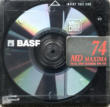
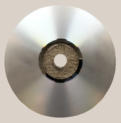
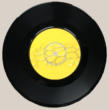
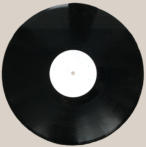
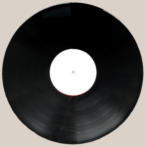
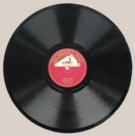

Southend Hits the Parade
In
1964
Dame
Cleo
Laine
released
her
song
‘Southend’.
It
was
an
unusual
song
from
the
great jazz singer, a sing-a-long waltz which depicted the seaside holiday of its time.
The First Record Shop
There
are
two
claims
to
be
the
oldest
record
shop
in
the
world,
the
first
is
Spillers
Records
in
Cardiff,
Wales,
which
was
founded
by
Henry
Spiller
in
1894.
The
second
claim
to
be
the
first
record
shop
in
the
world
is
by
Giovanni
D’Amato
who
founded
his
shop
in
Valletta,
Malta in 1885. Unfortunately we are not certain of the first record shop in Southend.
The 78 Revolution, The Shops
More Shops
The Media for the Reproduction of Sound


Digital Media
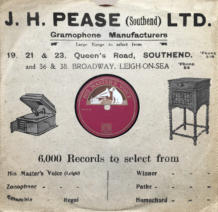
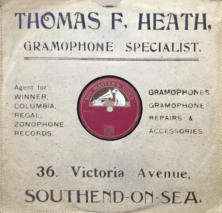
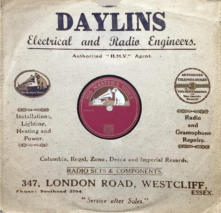
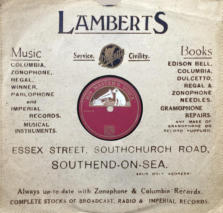
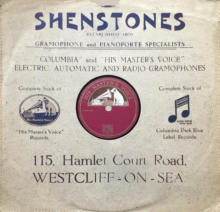
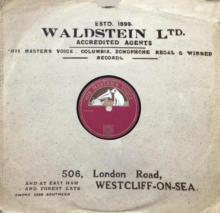
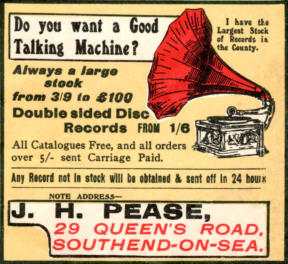
Revolver Records, Southchurch Rd,
Southend
Two Twelve Tens, Princes St,
Southend
W. H. Smiths, Record Dept,
207 High St, Southend
Our Price Records, Southend
P & P Records, West Road, Southend
Projection Records, Southend
MVC, London Road, Southend
Guy Norris, 239 – 241 Churchill South,
Victoria Square, Southend
Woolworths, Record Dept,
High St, Southend
Fives, Leigh Broadway, Leigh-on-Sea &
Eastwood Rd, Rayleigh
Downtown Records, 401 London Rd,
Westcliff-on-Sea
Virgin Records, Virgin Mega Store,
Virgin Media, Southend
J & R Tapes, Sutton Rd, Southend
Hamiltons, Weston Rd, Southend
Disc Den, 429 – 431 London Rd,
Westcliff-on-Sea
Golden Disc, Queens Rd, Southend
Gumbies Records, Southend
Gilberts, 37 Southchurch Rd &
277 London Rd, Southend
W. H. Smiths, Record Dept,
207 High St, Southend
Record Man, The Chase, Rayleigh,
plus pop up shop at the Zero 6
Boots, Record Dept,
High St, Southend
HMV, Southend
Simon’s Records,
Southchurch Rd, Southend
Parrot Records, Victoria Shopping
Centre, Southend
Kelleys, 1723 London Rd, Leigh-on-Sea,
92 High St Southend, also shops in
Rayleigh & Basildon
Leigh Record Exchange, Leigh-on-Sea
Keddies Record Dept, High St, Southend
Ryan’s Records, 320 Chartwell North,
Victoria Circus, Southend
Soundtrack, 149 Leigh Rd, Leigh-on-Sea
Hodges & Johnsons 37 – 43 Broadway West, 19 Rectory Grove, Leigh-on-Sea,
126 Hamlet Court Rd & 5 Southchurch Rd
British Home Stores, Record Dept,
High St, Southend
Carmel Records, London Rd, Westcliff
South Records, Queens Rd, Southend
c1913 J. H. Pease Advert

Southend-on-Sea’s No 1 History Website! Documenting The Town & The Townspeople
Now Incorporating The Sea Of Change Website
Website Info:


Chalkwell ▪ Eastwood ▪ Leigh-on-Sea ▪ Prittlewell ▪ Shoeburyness ▪ Southchurch ▪ Thorpe Bay ▪ Westcliff-on-Sea
































































